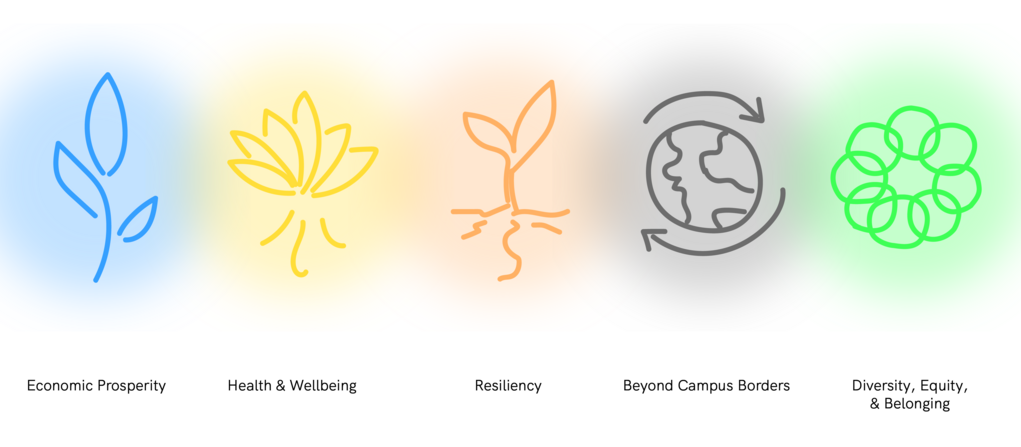
March 29, 2021
2020 was the mid-point of the Yale Sustainability Plan 2025 (YSP2025), a time met with racial injustice, social unrest, and a global pandemic. In the midst of these compounding crises, the Yale Office of Sustainability recognized a responsibility and unique opportunity to promote recovery in a way that pushes our social and operational systems to be more accessible and equitable for every member of the community.
To guide this work, the Office of Sustainability focused on a set of cross-cutting priorities that were foundational to the goals set in the YSP2025 and created a process to quantify the less tangible but nonetheless critical impacts of achieving them. This process required developing a methodology to define and assess the co-benefits of their goals, or the additional positive outcomes that may come as a direct or indirect result of achieving them.
Part of the aim was to highlight how sustainability efforts at Yale can foster a sense of inclusivity, justice, and belonging. The team identified five co-benefit areas to assess:
- Economic Prosperity: Factors that reduce short and long-term costs/advance cost savings for the University
- Health & Well-being: Factors that relate to the physical and mental well-being of the Yale Community
- Resiliency: Factors that relate to Yale’s ability to prepare for, recover from, and adapt to the effects of climate change
- Beyond Campus Borders: Factors that relate to Yale Sustainability’s vision of being a local and global leader in sustainability
- Diversity, Equity and Belonging: Factors that relate to the advancement of community belonging as well as diversity, equity, and inclusion at Yale
In summer of 2020, the Office organized an internal Co-benefit Assessment Workshop. Staff evaluated how each goal currently being pursued advanced the five co-benefit categories, and—using a set of specific questions to guide the decision-making process—decided whether each co-benefit was a “major,” “moderate,” or “neutral” benefit to each goal. To publicly launch the co-benefits matrix, the team developed an interactive data set showcasing the results of this exercise.
Co-benefit Matrix
“This assessment is a first attempt at measuring our impact in a more comprehensive way, that demonstrates the breadth of sustainability, and the impact of our efforts on the environment, the economy, and equity,” says Ginger Chapman, Director of the Yale Office of Sustainability.
Members of the Yale community and public are encouraged to explore the co-benefits of the goals of YSP2025 through the new interactive data visualization.
Looking ahead
The Office intends to repeat and report on this exercise annually to see if the potential to advance co-benefits with our goals changes and/or improves over time. As the current set of 38 goals will be retired by 2025 and new goals enter the Office’s long-term strategy, this exercise will ensure that well-being, climate justice, and priorities of both the Yale and New Haven community are fully integrated with Yale’s sustainability goals.
“Assessing co-benefits, especially those around social and environmental justice issues, is a way to look internally at the impact of our work, but also to help elevate the priorities of vulnerable communities who have been historically left out of climate conversations,” says Amber Garrard, Senior Manager at the Yale Office of Sustainability. “We hope that the results of this exercise help illuminate the intersectionality of sustainability problems and solutions with issues of racial and environmental justice, and to hold us accountable internally.”